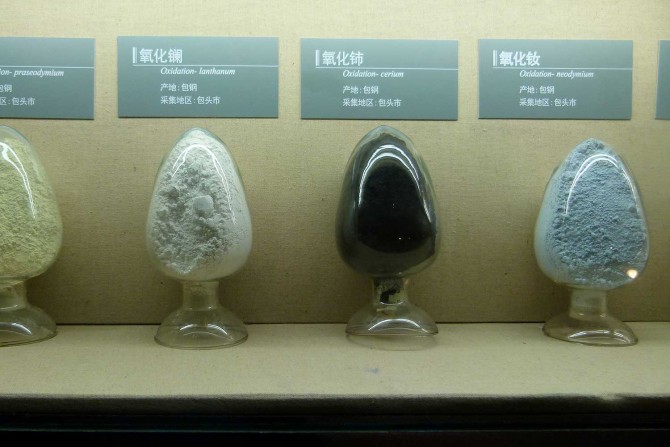News directly from Cornell's colleges and centers
Wilson wins grant to explore rare earth element opportunities
By Kate Blackwood
The 17 metallic rare earth elements – 57 through 71 in the Periodic Table plus scandium and yttrium – are critical resources used in a wide range of technological applications. They are found in wind turbines, liquid crystal displays, batteries, and portable electronics.
Because the purified form of these elements is primarily sourced from foreign nations, the U.S. supply chain of the rare earth elements presents a problem.
Justin Wilson, associate professor of Chemistry and Chemical Biology in the College of Arts and Sciences, has received a grant from the U.S. Department of Energy’s Basic Energy Sciences program to develop more efficient methods of separating rare earth elements that will make their domestic availability economically viable.
Although natural mineral deposits of the rare earth elements are present within the U.S., environmental and cost-related concerns render these inaccessible from an economic perspective, Wilson said. Thus, the majority of rare earth elements are currently sourced from foreign nations, like China, where environmental regulations are less stringent. In nature, these elements are always found as a mixture within the same mineral deposits. As such, the major cost-driving and environmental factor in obtaining the rare earth elements in their pure forms is their separation.
Because these elements have similar chemical properties, their separation is non-trivial, Wilson said. Current methods require multiple steps in a process known as liquid-liquid extraction that is energy-intensive and produces a significant amount of hazardous waste.
“The more efficient and environmentally friendly separation of the rare earth elements is a chemistry problem in its core,” Wilson said. “We are excited to apply our expertise in this area to tackle this important problem. Given the widespread use and growing demand for new technologies and devices that use the rare earth elements, we hope that our separation strategies can make these critical resources more widely available in the U.S.”
Wilson’s project addresses these challenges by exploring new strategies to separate the rare earth elements. The project investigates chemical receptors, or ligands, that can bind, or chelate, the different rare earth elements with different degrees of efficacy, or affinities. By tuning the relative affinities of these ligands, Wilson aims to use this approach to design separation strategies to differentially extract the chemically similar rare earth elements. This research will strengthen the foundations for more efficient domestic separation of the rare earth elements.
The first objective of this project is to design and synthesize new ligands to alter their rare earth-selectivity profiles. Additional ligand modifications to alter what is known as the “secondary coordination sphere” of the rare earth elements are targeted in the second objective. In the final objective, these ligands are applied to demonstrate the separation of the individual rare earth elements using solvent extraction techniques.
With this project, Wilson hopes to find more energy-efficient, environmentally friendly ways to separate the rare earth elements, making supply chains of purified critical resources accessible within the U.S.
Read the story in on the College of Arts and Sciences website.
Media Contact
Get Cornell news delivered right to your inbox.
Subscribe


